13 Must-See Highlights Of England’s Iconic Gothic Castle
England’s Gothic castles stand as magnificent monuments to medieval grandeur and architectural brilliance. These towering fortresses, with their pointed arches, ribbed vaults, and flying buttresses, tell stories of knights, royalty, and centuries of rich history.
When you explore these incredible structures, you’ll discover breathtaking features that showcase the skill of medieval craftsmen and the power of ancient rulers.
Get ready to journey through stone corridors and soaring halls that have witnessed some of England’s most dramatic historical moments.
1. The Great Hall with Vaulted Ceilings

When you step into the Great Hall, your eyes immediately travel upward to witness architectural magic. Ribbed stone vaults stretch across the ceiling like giant stone fingers, creating patterns that seem to dance in the filtered light. These weren’t just for show – they actually helped distribute the massive weight of the stone roof.
Medieval lords used this space for grand feasts and important ceremonies. Long wooden tables once filled the floor, where knights and nobles gathered to eat, drink, and plan their next adventures. The acoustics here are incredible too.
You can almost hear the echoes of ancient conversations bouncing off these stone walls. The craftsmanship required to build such soaring spaces without modern tools shows just how skilled medieval builders really were.
2. Towering Stone Battlements and Crenellations
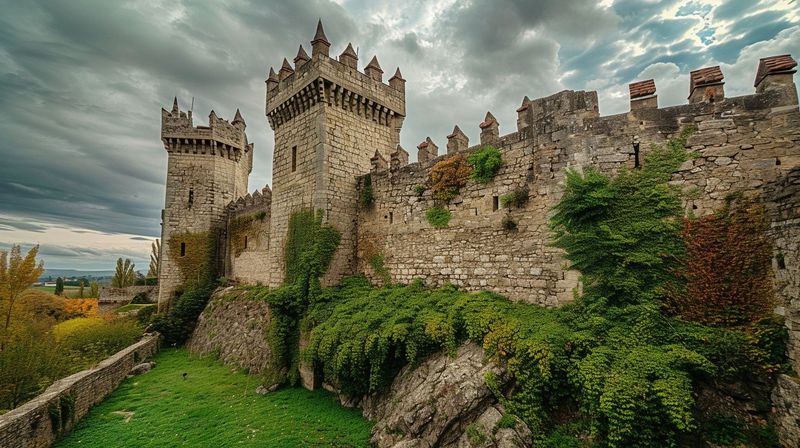
Those distinctive tooth-like patterns along the castle walls aren’t just decorative – they’re called crenellations, and they saved countless lives during medieval battles. The raised portions (merlons) provided cover for archers, while the gaps (embrasures) allowed them to shoot arrows at approaching enemies.
Walking along these battlements gives you a commander’s view of the surrounding countryside. Medieval defenders could spot trouble coming from miles away, giving them precious time to prepare for siege warfare. The stone blocks weigh several tons each.
These walls have weathered centuries of storms and conflicts, yet they still stand strong today. You’ll feel the weight of history beneath your feet as you imagine armored knights patrolling these very same walkways.
3. Magnificent Rose Window Stained Glass
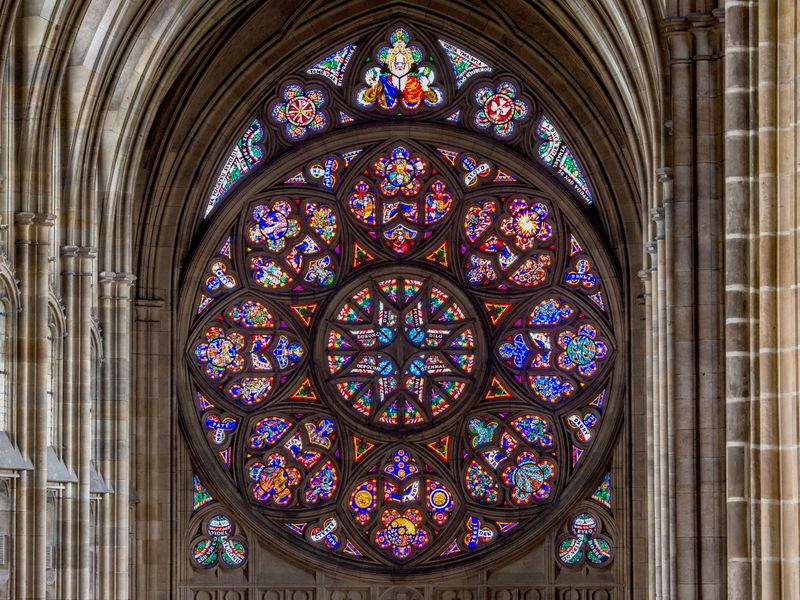
Nothing captures Gothic beauty quite like a rose window, with its circular design radiating colored light like a giant kaleidoscope. These masterpieces combine art, engineering, and spirituality in ways that still take your breath away today. Each piece of glass was carefully cut and painted by hand.
Medieval artisans used techniques passed down through generations to create these glowing jewels. The lead strips holding the glass pieces together form intricate patterns that tell religious stories or display family coats of arms. Sunlight transforms the interior into a rainbow of colors.
When morning light streams through these windows, the entire chapel comes alive with dancing colors. You’ll understand why medieval people believed these windows were glimpses of heaven itself.
4. Spiral Stone Staircases in Towers
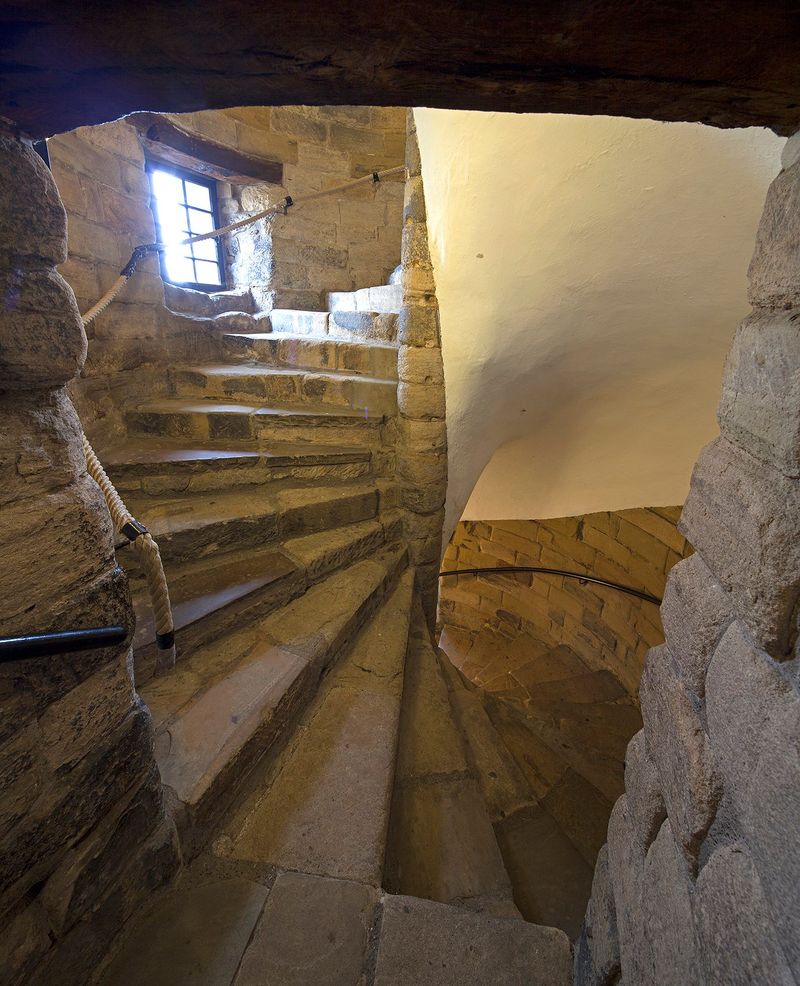
These winding staircases were built with a clever defensive purpose – they spiral clockwise, giving right-handed defenders an advantage over attackers climbing up. Your hand naturally follows the curved stone banister that countless others have touched over the centuries.
Each step shows wear patterns from hundreds of years of use. The stones are smooth and slightly hollowed where millions of footsteps have passed. Small arrow slits in the walls provide just enough light to guide your way upward.
Climbing these stairs connects you directly to medieval life, as servants, soldiers, and nobles used these same routes daily. The narrow width meant only one person could pass at a time, making tower defense much easier during attacks.
5. Gothic Pointed Arch Doorways
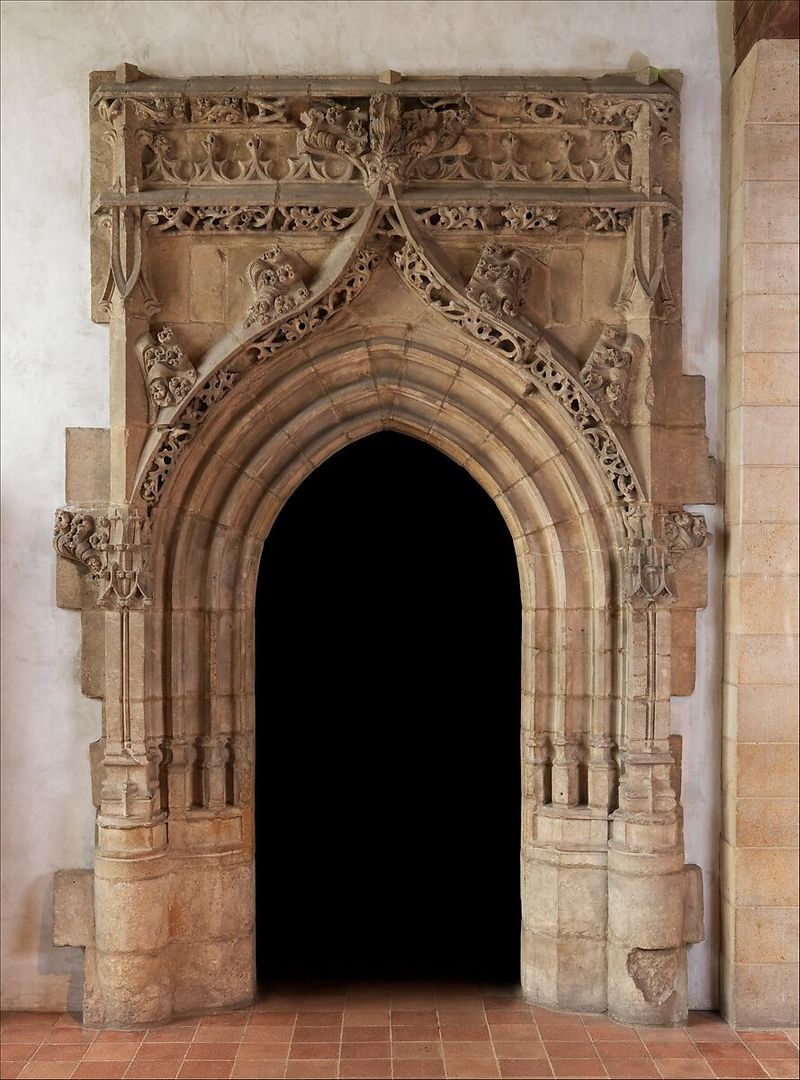
Gothic pointed arches revolutionized castle construction by distributing weight more efficiently than rounded Roman arches. These elegant doorways frame entrances like stone crowns, welcoming visitors while displaying the castle’s power and sophistication.
The carved stone decorations around these arches often tell stories or display family symbols. Medieval stonemasons spent months creating these intricate details using only hand tools and incredible skill. Each arch is slightly different, showing the personal touch of its creator.
Heavy wooden doors reinforced with iron bands once secured these entrances against unwanted visitors. The massive hinges and lock mechanisms show how seriously medieval people took castle security while maintaining architectural beauty.
6. Underground Dungeons and Prison Cells
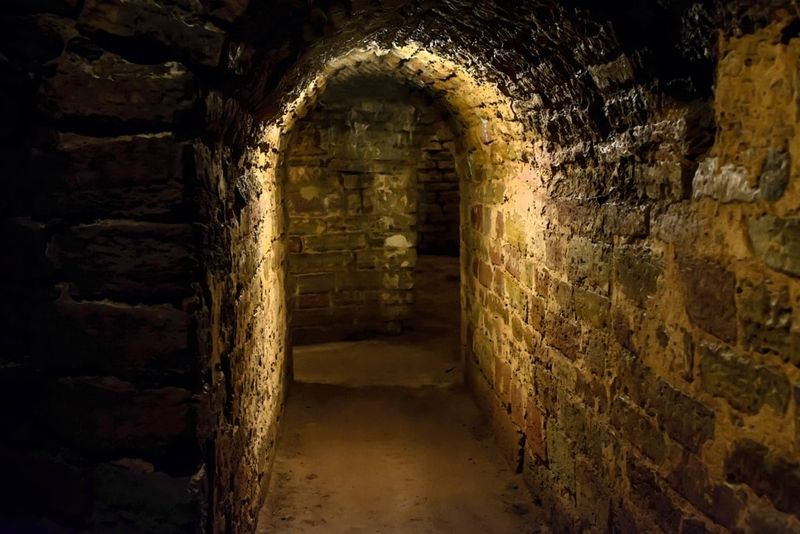
Medieval dungeons weren’t always the torture chambers movies make them out to be – many were simply secure holding areas for prisoners of war or political captives. The thick stone walls and lack of windows made escape nearly impossible.
These underground chambers stay naturally cool year-round due to their depth below ground. Iron rings set into the walls once held chains, while small barred windows provided the only connection to the outside world. The acoustics down here are eerily quiet.
Walking through these spaces gives you chills as you imagine the stories these walls could tell. Some prisoners carved messages or drawings into the soft stone, leaving permanent reminders of their time in captivity.
7. Flying Buttresses Supporting Walls
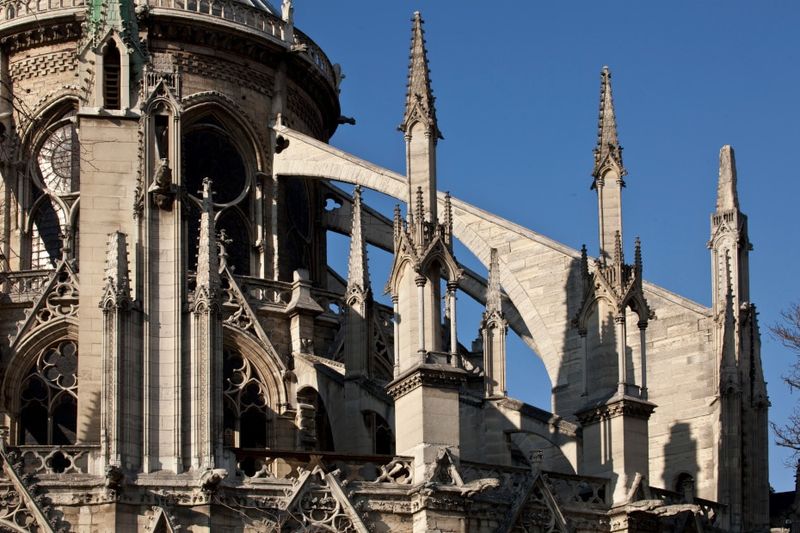
These stone arms reaching out from the castle walls represent one of Gothic architecture’s greatest innovations. Flying buttresses transfer the enormous weight of tall stone walls and roofs to external supports, allowing builders to create soaring interior spaces.
Without these engineering marvels, Gothic castles couldn’t achieve their impressive heights. Each buttress is carefully calculated to handle specific loads and wind forces that would otherwise cause walls to buckle outward. The pointed tops often feature decorative pinnacles.
Medieval engineers understood physics principles that wouldn’t be formally written down for centuries. You can see how these supports have kept castle walls standing through earthquakes, storms, and the test of time itself.
8. Castle Keep Central Tower
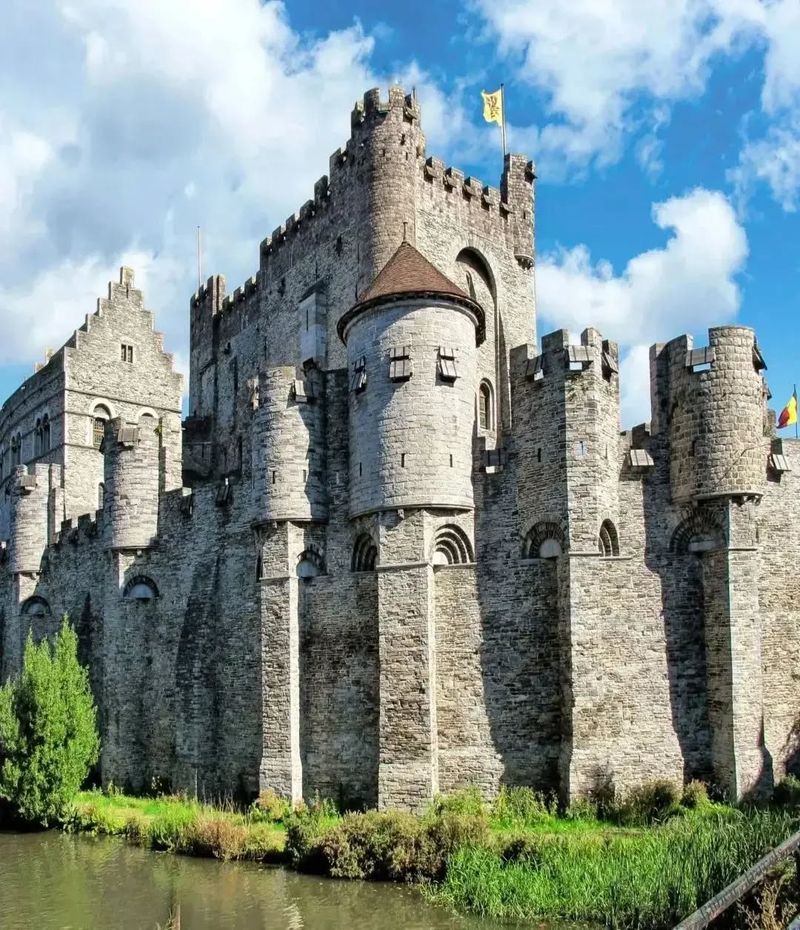
The keep served as the castle’s final line of defense and the lord’s most secure residence. This massive tower, often rising 100 feet or more, could house an entire household during extended sieges. The walls here are typically 10-15 feet thick.
Multiple floors provided different functions – storage below, living quarters in the middle, and defensive positions at the top. Narrow windows kept enemies out while allowing defenders to shoot arrows. A well inside provided fresh water even during long sieges.
Standing at the base of these towers makes you feel incredibly small compared to medieval engineering achievements. The sheer scale required hundreds of workers and several years to complete, representing enormous wealth and determination.
9. Ornate Castle Chapel with Altar
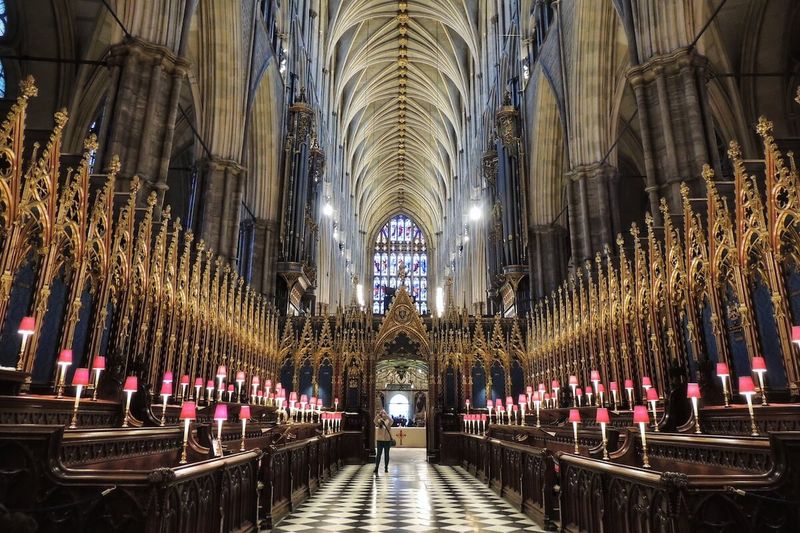
Medieval castle chapels served as spiritual centers where lords and their households attended daily prayers and special ceremonies. These sacred spaces feature the finest artistic work in the entire castle, with carved stone altars and religious sculptures.
The altar area often contains elaborate stone carvings depicting biblical scenes or saints. Wooden choir stalls provided seating for religious services, while the acoustics were designed to carry voices and music beautifully. Many chapels include crypts beneath the floor.
These intimate spaces contrast sharply with the castle’s military areas, offering peaceful retreats for prayer and contemplation. The craftsmanship here rivals that of great cathedrals, showing how important faith was to medieval castle life.
10. Medieval Kitchen with Massive Fireplaces
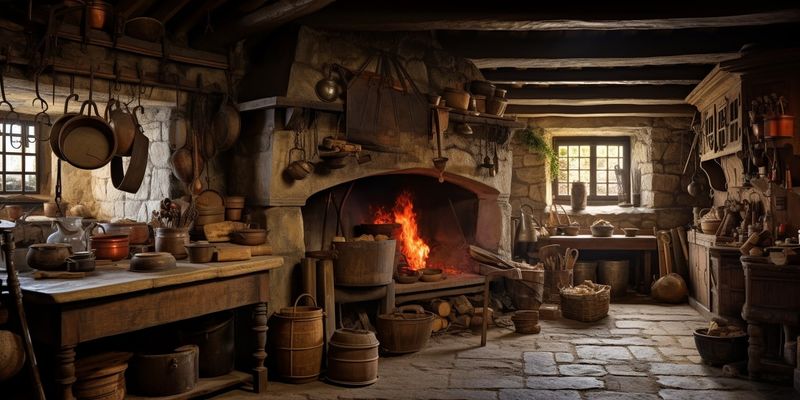
Castle kitchens were industrial-scale operations designed to feed hundreds of people daily. The massive fireplaces could roast entire oxen, while smaller hearths handled bread baking and sauce preparation. Thick stone walls contained the intense heat and smoke.
Multiple cooking fires burned simultaneously during feast preparations. Servants used long-handled tools to tend fires safely, while enormous cauldrons hung from iron chains. The stone floors made cleanup easier after messy food preparation.
These kitchens operated like medieval restaurants, with specialized cooks handling different types of food. You can still see soot stains on the ceiling and walls from centuries of cooking fires that fed castle inhabitants.
11. Defensive Murder Holes Above Entrances

These innocent-looking holes in entrance ceilings served a deadly purpose during castle attacks. Defenders could drop rocks, pour boiling oil, or shoot arrows through these openings at enemies trying to break through the gates below.
The strategic placement makes them nearly invisible to approaching attackers. Medieval engineers designed these features into the strongest parts of the entrance, where stone thickness provided maximum protection for defenders above. Each hole is precisely sized for different defensive weapons.
Walking beneath these openings today gives you chills as you imagine the terror they once inspired in attacking forces. The psychological effect was often as important as the physical damage they could inflict on unwanted visitors.
12. Decorative Stone Gargoyles and Grotesques
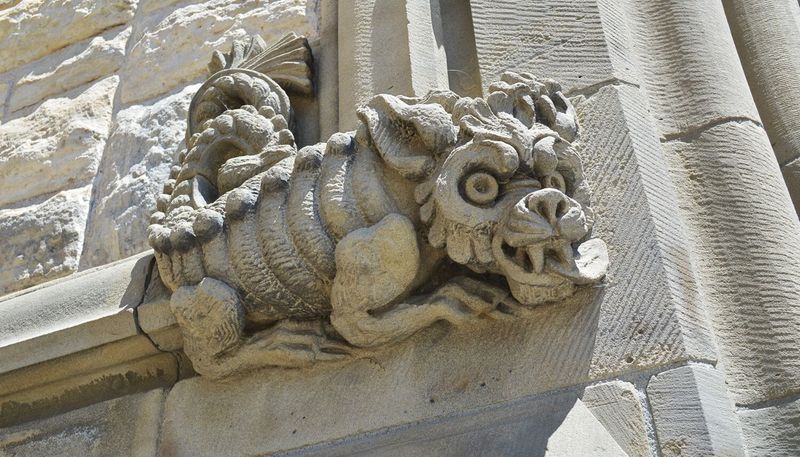
These fantastic stone creatures serve both practical and protective purposes in medieval belief systems. Gargoyles channel rainwater away from walls through their mouths, while grotesques (decorative versions without water spouts) were thought to ward off evil spirits.
Medieval craftsmen let their imaginations run wild when creating these figures. You’ll find dragons, demons, animals, and even caricatures of real people carved into the stone. Each one is unique, reflecting the individual artist’s personality and skill.
These whimsical touches show medieval people’s sense of humor alongside their practical engineering skills. The detailed carving work represents hundreds of hours of patient stone cutting, creating permanent residents that have watched over the castle for centuries.
13. Courtyard with Gothic Arched Walkways

The central courtyard served as the castle’s beating heart, where daily life unfolded under Gothic arched walkways that provided shelter from weather. These covered passages connected different parts of the castle while creating beautiful architectural spaces.
Stone columns support graceful arches that frame views of the courtyard. Medieval inhabitants used these walkways for everything from business meetings to romantic encounters. The acoustics create interesting echo effects when you speak or sing.
Today, these courtyards offer peaceful spaces to appreciate Gothic architecture up close. The interplay of light and shadow through the arches changes throughout the day, creating a constantly shifting display of medieval engineering and artistic beauty.
